In Visual Variations the spectator is exposed to a wide variety of Marie Menken's works, works that prove eclectic in their structure as well as in their content.
Having started as a painter, Marie Menken (1910-1970) has always showcased a deep curiosity for the mixing of different media, a characteristic kept well throughout her moving image career. In aesthetic terms, heavy textures, much movement and contact with the apparatus, can also be said to stem from her career as a painter (the camera held and moved as a brush). These are some of the characteristics that make of Menken an astonishingly important figure in the American avant-garde scene and a major influence for an array of pivotal experimental filmmakers and artists of her time and beyond.
In this edition of Menken's works, one sees just how diverse the artist was in her aesthetic preoccupations as well as experiential ones.
In Visual Variations on Noguchi (1945), the camera browses over the surface of Noguchi's wooden sculptures; it zooms in as if trying to touch their surface. At times it surprises the spectator by coming from within the structures whilst occasionally adopting an almost voyeuristic position, looking at the desired object from behind surrounding structures. These are a few aspects that grant this work's imagery a haptic dimension. We can certainly feel Menken's experience of Noguchi's works through the closeness of the camera to the sculptures and the texture this adds to the already textured wooden surfaces. What's more, through the camera moving up and down, in and out of these only partially seen objects, the spectator is invited to touch with their eyes and see with their hands.
These are elements that we can find in several of Menken's works, such as in Glimpse of the Garden (1957), where her presence, inextricably linked to the imagery via the handheld camera movements, is layered upon this sensuous and even tactile dimension. Moreover, the intricate and elaborate editing adds depth to this visual poem: Menken starts with a rather Cartesian composition—wide shots, with a lot of depth to them, where we can see Ripley's garden and greenhouse. She then goes onto methodically reducing the shot size and depth. Amidst this beautifully conducted reduction of the distance between the spectator and the imagery, Menken turns on herself. This slightly disorienting and completely unexpected camera movement comes announce the twists and turns that follow—she walks through trees, she zooms in on a bush of flowers (cutting between each shot variation), moves the camera around in every direction at an ever increasing speed, etc.—until all is suddenly interrupted by a reflection of the greenhouse we saw in the beginning, except this one doesn’t seem to belong to the world she's been showing so far. Furthermore, this image comes sooth, but also briefly (and only slightly) shock the spectator. What this image does, as well, is vehemently deny any sort of pre-established distance between the spectator and the work, by transforming this previously Cartesian image, into a haptic one (the image is now dark, it lacks depth, and it is textured by the movement of the water). Another element underlining this refusal of any kind of distance is the continuity of the soundtrack (birds chirping and singing), unaltered from the beginning until the end of this beautiful film.
What follows is Hurry! Hurry! (1957), a film where Menken goes even further in this attempt to merge spectator and image by adopting a microscopic vision of the dizzying life and death of spermatozoids.
Dwightiana (1959), a stop-motion of Dwight Ripley's images, comes add a little lightheartedness to the first section of this edition, something characteristic of the artist, whose visual poems are as varied as her curiosity.
We go back to the hapticity of the first couple of works with Arabesque for Kenneth Anger (1961), although here this is done through close-ups of heavily detailed architecture, and water. Once again we witness an increase in speed, which when complemented by the music of Teiji Ito, makes for an exciting sensorial experience.
Now, the last film of the first part seems to entice a different understanding. In Bagatelle for Willard Maas (1961), Menken films art. She films paintings and sculptures that seem to account for a portrait of women (at first portrayed as submissive, the male gaze of the painters piercing through Menken's lens), and men, portrayed as heroes and sires. As the rhythm increases, the tone changes in this film whose title includes Menken's violent husband's name. We notice Liberty Leading the People (Delacroix, 1830), and from then on she films statues of women from low angles (granting them a position of power), and other overall empowering representations of women; simultaneously, she films statues of men in great agony, defeated, suffering, their bodies at times objectified by a reduction in shot size that comes fragment them (Menken's structure and rhythm stay consistent). This makes the end all the more saddening: after the hope of the middle section discussed prior, the film ends with a large, wide shot of an epic statue portraying a grandiose man surrounded by magnificent horses, going into battle. Besides this, Menken underlines its importance by focusing on the gaze: she makes sure to film all the visitors gazing at the statue, herself looking and pointing her camera at it. With this beautiful and extremely private visual poem, Menken grants the spectator access to her interiority and subjectivity in a way that is characteristic of her.
On account of this, it is safe to say that the spectator is in for a deep sensorial and poetic experience from the beginning. Because of the chronological organization of Menken's works, this edition allows the spectator the agency to navigate freely between the different subjects and layers of Menken's oeuvre.
- Ana Catarina F. Araújo
FILMS
- 1945 Visual Variations on Noguchi 4'
- 1957 Glimpse of the Garden 5'
- 1957 Hurry! Hurry! 3'
- 1959 Dwightiana 3'
- 1961 Arabesque for Kenneth Anger 4'
- 1961 Bagatelle for Willard Maas 5'
- 1961 Drips in Strips 3'
- 1961 Eye Music in Red Major 5'
- 1962 Notebook 10'
- 1964 Moonplay 5'
- 1964 Go Go Go 11'
- 1965 Mood Mondrian 5.5'
- 1965 Andy Warhol 18'
- 1966 Sidewalks 6'
- 1967 Watts with Eggs 2'
- 1968 Excursion 5'





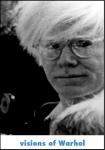





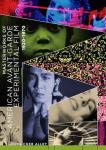

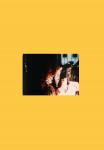

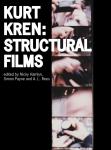
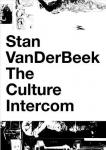

Add new comment